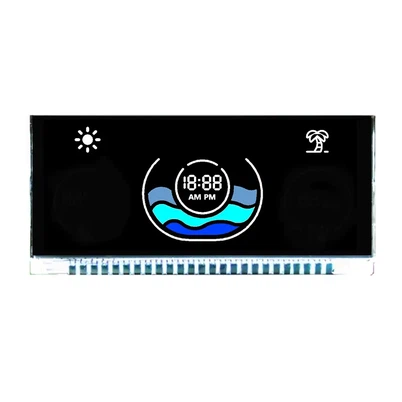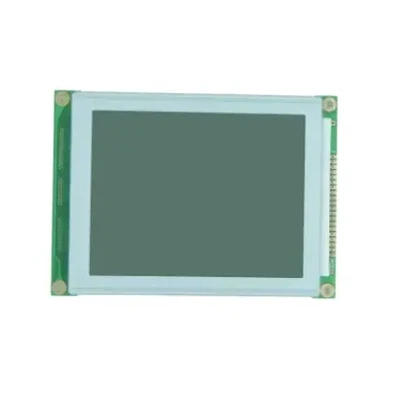Key parameters about the LCD screen
Leave a message
The working principle of liquid crystal display is completely different from that of traditional spherical display. The liquid crystal display screen is sandwiched between two pieces of glass - a layer (or multiple layers) of liquid crystal material, behind the glass there are several tubes that continue to emit light, and the liquid crystal material changes its light transmission state under signal control, so that the image can be seen in front of the glass panel
MHM.
LCD display performance is the following parameters:
Response time
The speed of the response time is an important indicator of the quality of the liquid crystal display, the response time refers to the reaction speed of the liquid crystal display for the input signal, that is, the reaction time of the liquid crystal from dark to bright or from light to dark. Generally, it is divided into two parts :Tr(rising time), Tf(falling time), and the response time we say refers to the sum of the two, the smaller the response time, the better, if more than 40 milliseconds, there will be a hysteresis phenomenon of moving images. At present, the standard response time of LCD displays is mostly around 25 milliseconds, but there are a few models that can reach 16 milliseconds. With an ultra-fast response time of 16ms, you can use the speed of more than 60 frames per second to completely solve the problem of dragging and residual shadow in the traditional LCD screen when playing games or watching DVDS.
Contrast
Contrast is the ratio of brightness between the bright and dark areas of the display under specified lighting conditions and viewing conditions. Contrast is a parameter that directly reflects whether the LCD can reflect rich color levels, the higher the contrast, the better the restored picture layer. At present, the nominal LCD screen is 250:1 or 300:1, and high-end products are 400:1 or 500:1. The point here is that contrast must be paired with brightness to produce the best display. A high contrast ratio of 400:1 or 500:1 will make the displayed picture more colorful and softer, allowing you to play games or watch movies directly to the CRT display.
luminance
The brightness of the LCD screen is generally higher than that of the traditional CRT display, the brightness of the LCD screen is generally cd/m2(lumens/per square meter), the higher the brightness, the stronger the anti-interference ability of the display to the surrounding environment, the display effect is brighter. This parameter should reach at least 200cd/m2, preferably more than 250cd/m2. The higher the brightness of the traditional CRT display, the greater its radiation, and the height of the LCD display is obtained through the backlight of the fluorescent tube, so there is no negative effect on the human body.
Screen break
The most common bad spots on the screen are white or black. The identification method of the black spot is to turn the entire screen into a self-screen, and the black spot has nowhere to hide; Since the dot is the opposite, the screen is turned to black, and the white dot will show its original shape. Generally, the display screen with no more than 3 bad points is qualified to leave the factory, the one within 3 points is A screen, the one within 10 points above 3 points or with light spots is B screen, and the one with heavy spots and lines is C screen.
Viewing Angle
The LCD screen is a backlit display, and the light emitted by the backlight behind the LCD module is provided, which inevitably leads to the LCD screen having only one best appreciation Angle. When you watch from other angles, because the backlight can penetrate the next pixel and enter the human eye, it will cause color distortion, without losing the real example is the viewing Angle of the LCD screen. The viewing Angle of the LCD screen is also divided into horizontal viewing Angle and vertical viewing Angle, and the horizontal viewing Angle is generally greater than the vertical viewing Angle. At present, as long as the horizontal Angle of view reaches 120 degrees and the vertical Angle of view reaches 140 degrees, it can meet the application needs of most users. The latest LCD panel is produced with wide-angle technology, which can reach an Angle of 140 degrees up and down, or about 150 degrees, reducing the inconvenience caused by too small an Angle of view. Of course, this performance is not comparable to the CRI display's nearly 180-degree viewing Angle, but it is more than enough for most applications.
The point distance of the LCD screen refers to the size of the interval between each pixel of the LCD screen, and the current standard point distance of the mainstream 15-inch LCD screen products is generally 0.297 mm, and the corresponding resolution is 1024x768. The visible area of the LCD screen is "real", in general, there is such a reference: the visible area of the 15-inch LCD screen is close to the 17-inch CRT display. The 15-inch LCD display has a viewing area of 304.1x228.1(mm).
bandwidth
The bandwidth of the LCD screen is also an indicator of the LCD screen. The bandwidth of the general LCD screen is 80MHz as the standard.
The large-screen LCD display has the advantages of LCD display and large-screen display, which makes the large-screen LCD display products represented by 17-inch LCD display have been favored by the majority of consumers. In addition, its visual area is larger than 18 inch color TV, and it has the advantage of no radiation, which allows users to appreciate it at close range.






